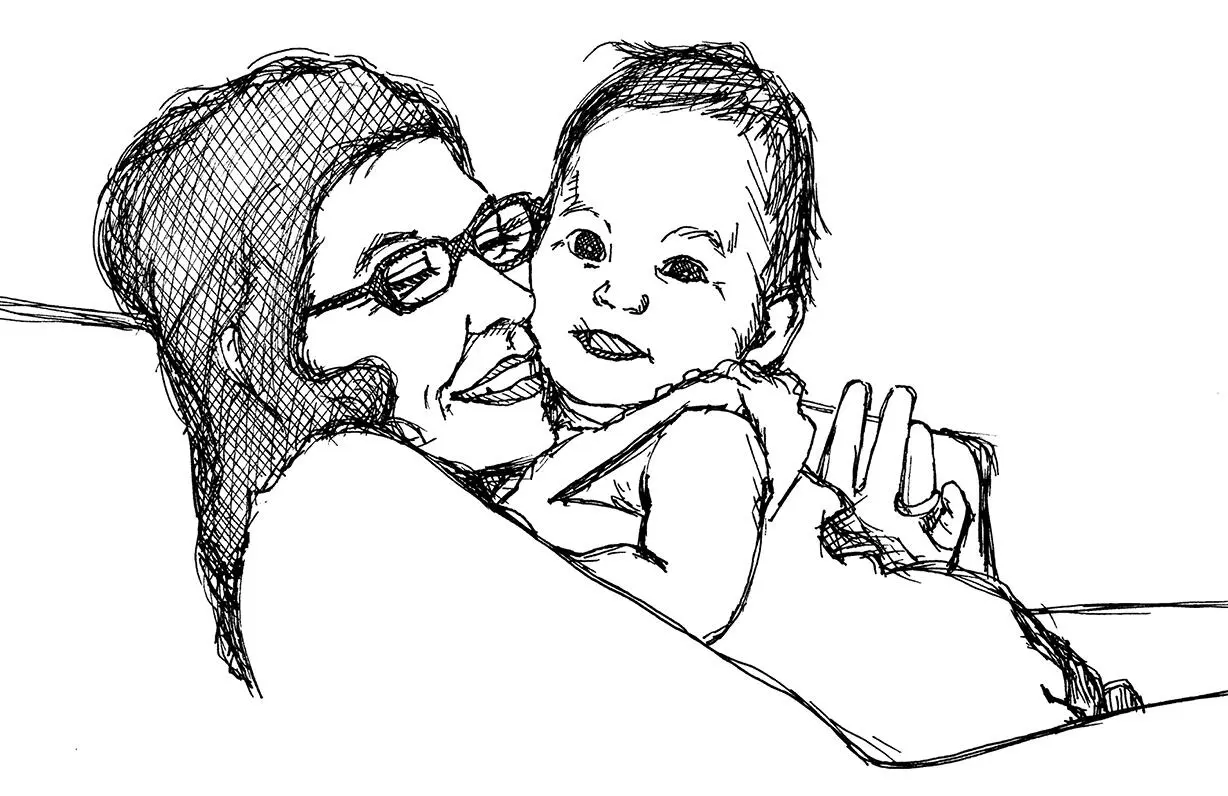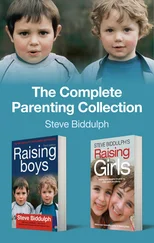Often Lucy’s cries will be more intense, if something has scared her or she has a moment of painful hunger, or because something is not to her liking. Her mother will match this startle response with, ‘Oooh, what’s wrong?’ or, ‘Oh dear, what’s the matter?’ using the higher-pitched voice that adults tend to adopt around babies. This voice is more audible to a baby’s ears. (Though nobody knew that until recently audiologists learned how to measure it.) The mother will then shift her pitch and tone to a more soothing level. She will probably pick Lucy up and rock her gently to restore some rhythmic peace. From thousands of such soothings Lucy’s brain will learn the pathway from stress to relaxation , a pathway she can use for all her life to come.
Lucy and her parents’ time together will have a quality that is called ‘responsiveness’. Put simply, they will be tuned in to her and will get to know her ways. They will read her signals and respond, not in a panicky way, but smoothly and contentedly. Partly this is simply how love (and the hormone of love, known as oxytocin) works, but partly it’s because they have made it a priority to be not too busy or rushed in these early months. (They didn’t decide to renovate the bathroom or take a big promotion right now, knowing that babyhood was a pretty demanding event on its own.) Unless Lucy’s mum is numbed out by drug addiction, or is suffering from depression, she will most likely find Lucy delightful to be around, though certainly demanding. Parenthood may not come naturally, but it will grow and settle into a new and satisfying rhythm, if she gives it time and if she has support from those around her.

Support from grandmas, friends, aunties is very important. New mums or dads can’t easily do this stage on their own, they need a bit of mothering too. Love is like a river and it has to flow in and out of us. Being close to family and friends really helps when you have a little baby.
People Skills Start Very Young
As adults we know that people skills make a huge difference in life. We notice it most when they are not there – a hugely insensitive boss or colleague, a person in the street or a shop who is clueless and uncaring. Awareness of other people’s feelings, the timing of conversation, knowing when to listen and when to speak, are complex and advanced skills. Most of us have had moments with another person where we are awkward, where perhaps the timing gets jumbled up. Hopefully this is just momentary; often it’s when we are trying too hard, or wanting to impress. We lost our own ‘realness’. Some people we meet are extraordinarily engaged and sensitive and we feel great to be with them, noticed and valued. For a social animal like us, harmonious interaction is central to our happiness.
That’s why we start learning long before we can even speak. Interestingly, it’s the second six months of human life that seem to matter the most. This is the time when a baby gets much more fussy about who is around them. Mothers have known for thousands of years that a newborn can be shared around, but a six-month-old baby knows exactly who its mum and dad are, and often won’t trust anyone else.
Neuroscience bears this out. It’s in the second six months of life that the baby grows those areas of the brain that are specifically for people skills. Girl babies have more aptitude and awareness of social connection, which is a natural strength of girls, but this still must be nurtured and strengthened. It’s not a matter of being self-conscious or deliberate – that would actually get in the way – you just go with the flow. Your baby calls you, you respond. It’s casual, natural, and soothing for you both.
The first six months of little Lucy’s life are rather sleepy, as she just gets used to being out in the world. In the second six months things speed up. Just inside her little forehead is an area of the brain that, if you could see it, looks like a cauliflower, wrinkled and furrowed. This area, known as the prefrontal cortex, is now starting to grow. The PFC is the most complex part of the brain, and it governs some things that are very important for life. The prefrontal cortex is the seat of empathy, sociability and human contact. It’s what makes us human .
The prefrontal cortex couldn’t grow earlier, because it would have made Lucy’s head too big to be safely born. And what’s in there, the software, also needs to be programmed by Lucy’s parents or carers, because they are unique to her family and culture and will help her live with them for the many years it will take to raise her.
Along with its social functions, the prefrontal cortex also controls two important abilities:
1 The ability to focus, to pay attention.
2 The ability to calm yourself down.
Babies can’t calm themselves for one important reason: they are wired up for panic . In the wild (the way we used to live for a quarter of a million years) babies were carried about for most of the day, because that was the best way to keep them safe and give them good care. And often the adults were walking for much of the time, so it was just a practical necessity. (Even today, in the so-called undeveloped world, babies are rarely put down. They also rarely cry.) In our long pre-history there were plenty of predators about that would love to snatch a human baby for their dinner. So if a baby found herself alone or, worse still, a big hairy muzzle suddenly appeared in her face, dripping saliva – and it wasn’t dad – she was probably in trouble. Babies who cried loudly were more likely to be rescued fast. So fearfulness and noisy panic had a survival value that became part of our design.
This alarm system in babies left alone has a very important message for us as parents. For just as we are told right from birth to keep babies warm – since they can’t regulate their own temperature – we have to keep them calm because they can’t regulate their emotions. So dozens of times a day , a baby gets upset, whimpers or cries, and her mum, dad, grandparent or sibling picks her up, soothes her, and helps her relax. ‘It’s okay, everything’s fine, there, there.’ Gradually this soothing becomes part of her, she learns how to do it herself , but this takes several years of receiving the gift of calmness from others. It’s all gradually building into strong mental health for a lifetime.
Your little girl learns calmness for life from the ease and comfort you bring to her early months and years. (Even in the womb, your adrenaline crosses over into her body, so a calm pregnancy can pay off in terms of giving you a more restful and happy baby.) This means planning as much as you possibly can to spend the time before and after your birth and right into the first year or two, with reduced pressure and the luxury of time with your little one.
This is so different to our idea of how to live: rush, hurry and busy-ness are the keystones of modern life. But our babies are Stone-Age babies, and modern madness does not serve them well. If you possibly can, make this time a break from the rush-about world you may have lived in all your life.
Calmness is not a character trait, it’s simply a skill. You have to decide that it matters, that the quality of your presence would be better if you slowed yourself down and were really connected to people and the moment you are living in. Then you practise until gradually it becomes part of you. It benefits everyone around you – they feel peaceful and happy in your presence. It’s exactly what children need in a parent. And it benefits you – with less stress hormones, you live longer and feel better. Calmness is well worth cultivating.
Читать дальше













